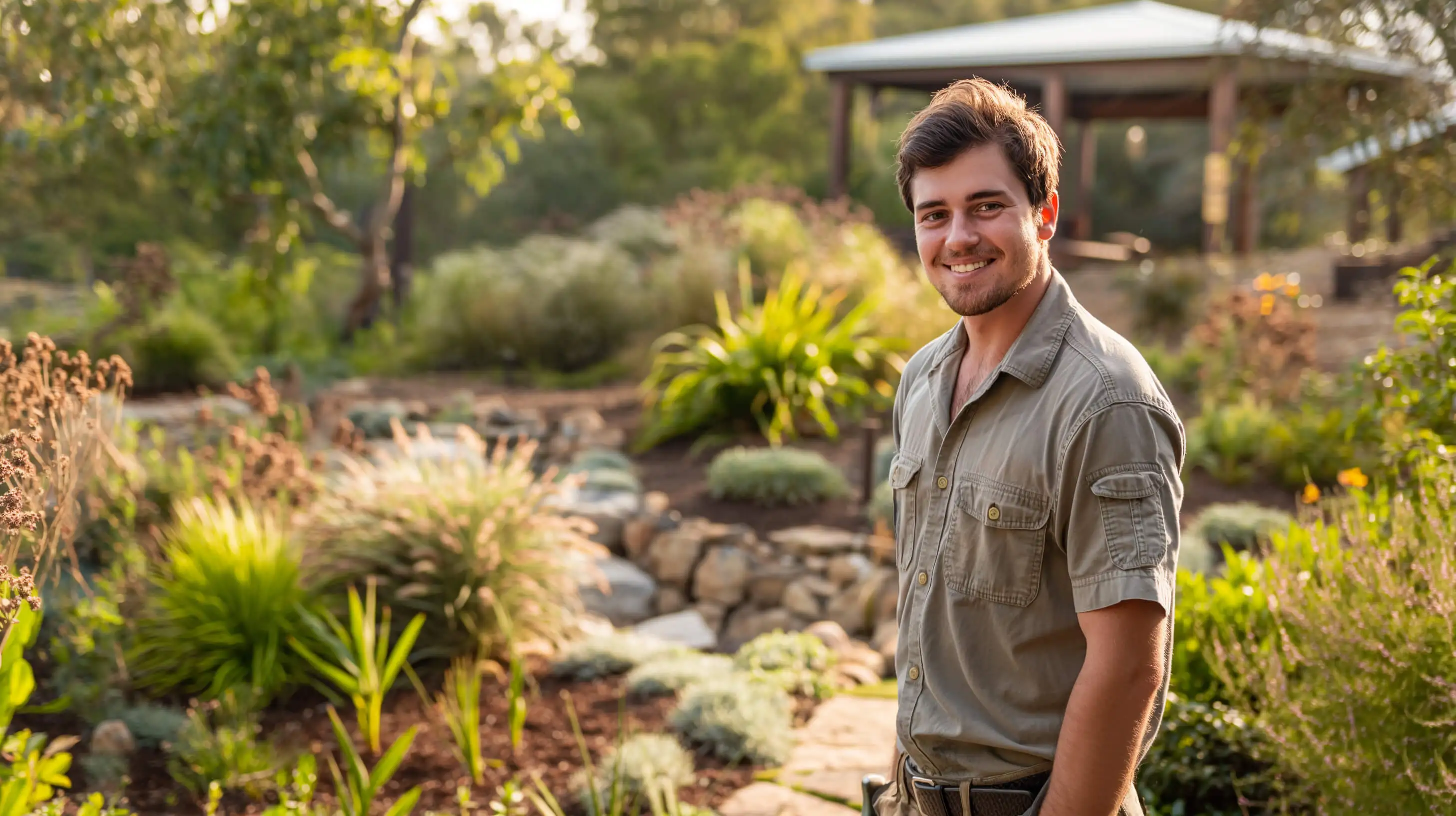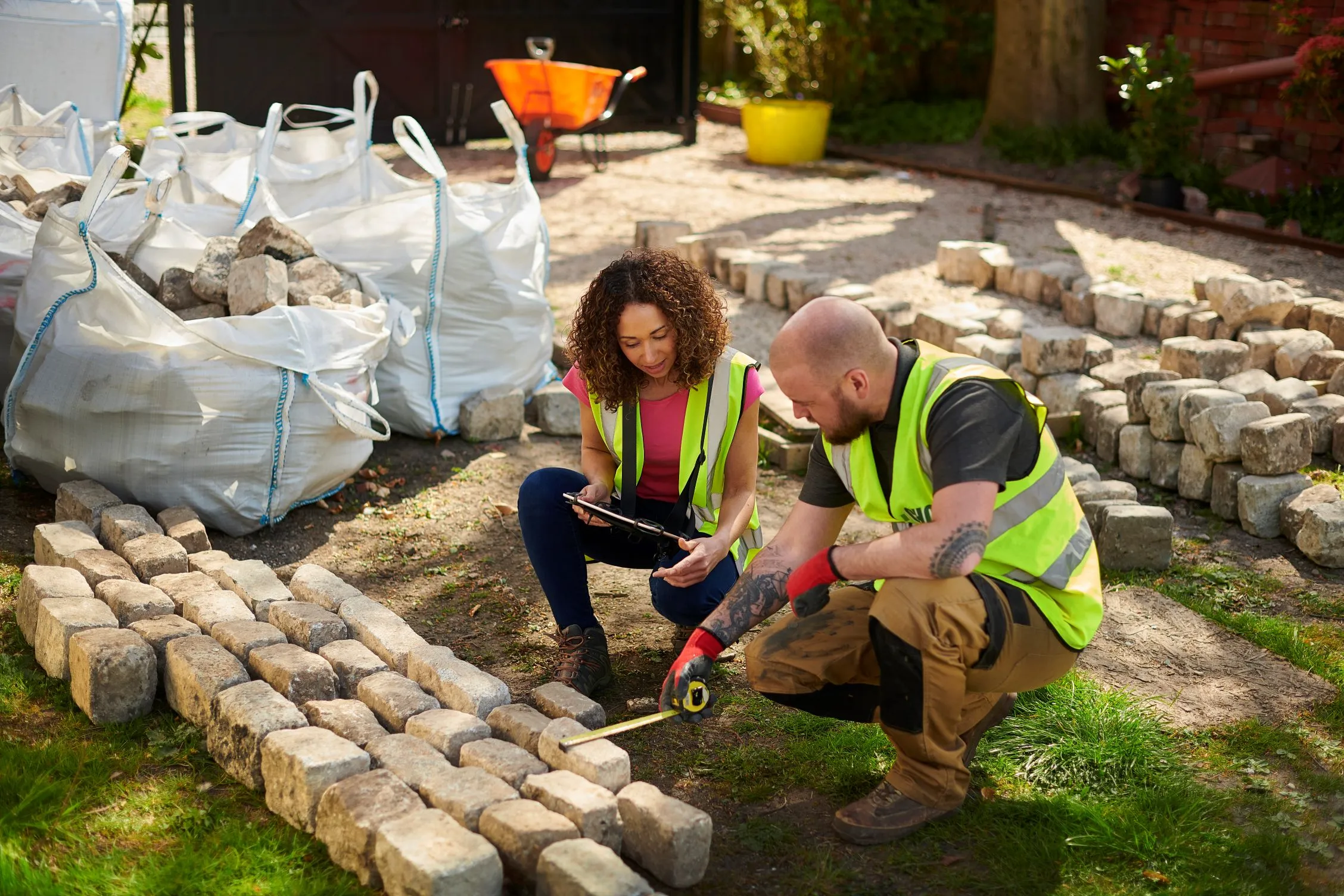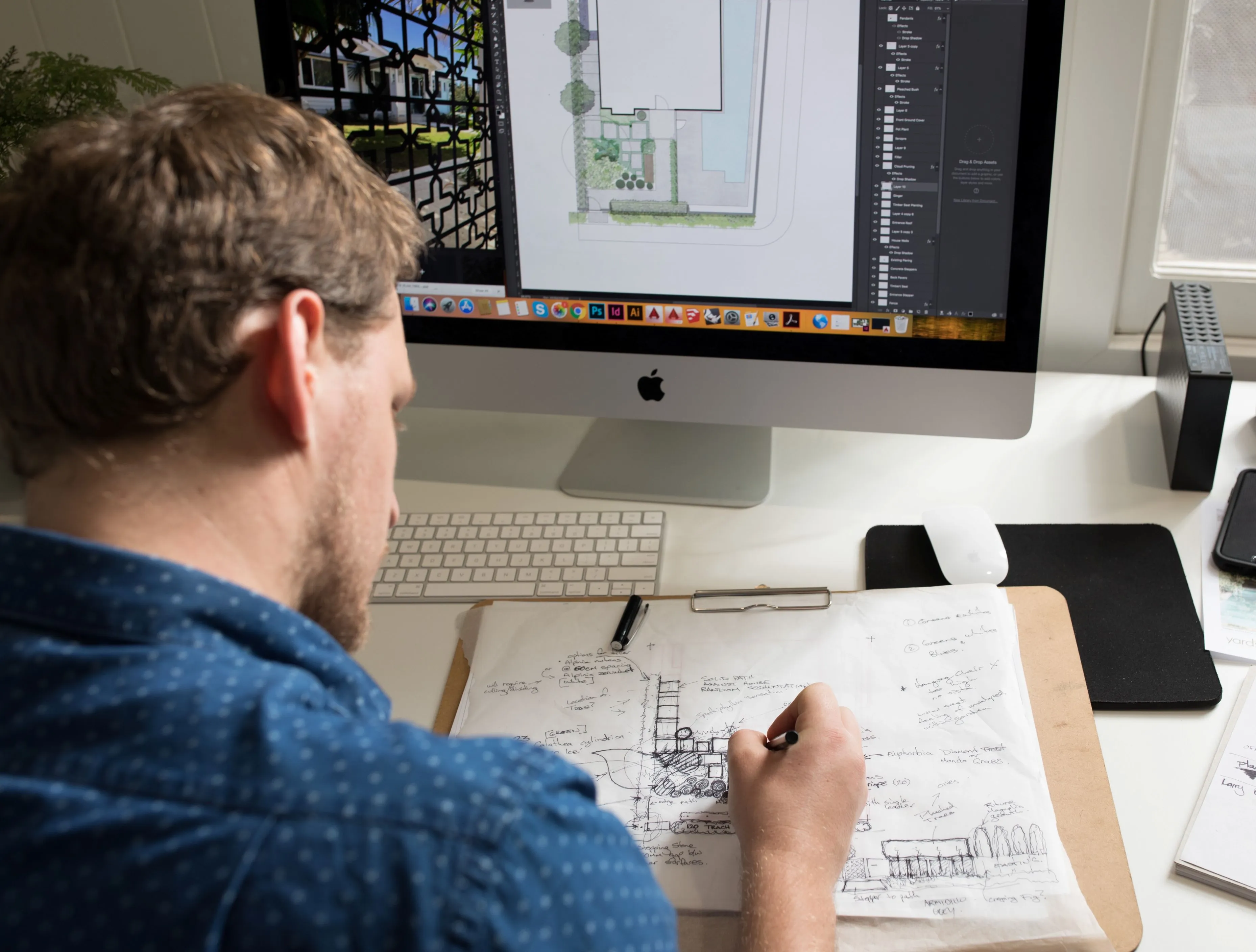
Design spaces that work — and support teams that bring them to life.
Landscape Designer
As a Landscape Designer, you’ll plan outdoor spaces that are practical, beautiful and ready to be built. Whether it’s a garden, courtyard or larger outdoor area, you’ll combine creativity with real-world thinking, considering how people will use the space and how it can be delivered by skilled trades on site.

Salary Range
$65,000 – $95,000+ experience, project type, and whether you freelance or work in a design studio

Recommended Training
Diploma of Landscape Design

Job Listings
Browse current job openings and take the next step in your landscaping career.
Job Overview
Landscape Designers help shape outdoor spaces by combining visual design with real construction know-how. You’ll work closely with clients to plan their space and document those ideas in a way that can be understood and built by the professional tradespeople on site. Designers are often the bridge between the client’s goals and the team bringing the design to reality. You’ll take into account the site conditions, budgets, plants, materials and technical requirements and create plans that are creative, compliant, and construction-ready. Landscape Designers often work in landscape construction companies, design studios or independently. Many skilled landscape tradespeople and horticulturists add design qualifications to use their on-site practical knowledge, expand their capabilities, and lead end-to-end projects.

Tasks & Duties
Meet with clients to understand goals, site needs and project scope
Create concepts, sketches and mood boards
Select suitable plants, finishes and materials for function and site conditions
Draft scaled plans, elevations and planting plans using CAD
Prepare renders and visual presentations to communicate ideas
Recommend layout solutions for slopes, access, drainage or usability
Conduct site visits to assess conditions or liaise with build teams
Work with landscapers, builders and suppliers during handover or delivery
How to Become a Landscape Designer
You can move into this role from multiple entry points — whether from a hands-on landscaping background, or through study.
- Diploma of Landscape Design (AHC50621) Focused on planting design, construction detailing, CAD and visualisation — typically 1.5–2 years full-time or part-time.
- Certificate III in Landscape Construction or Horticulture Provides vital experience with plants, site conditions and how things are built — many successful designers start here.
- Bachelor of Design or related field Some professionals begin in other design disciplines (architecture, interior, industrial) and pivot into landscape with further training.
- Software Proficiency Programs such as AutoCAD, SketchUp, Vectorworks, Lumion, Adobe Creative Suite
- Construction Knowledge Designers who understand buildability are highly valued by landscaping teams
- Plant & Horticulture Knowledge Understanding of plant performance, soil needs and seasonal care
- Written & Verbal Communication Essential for reporting, collaboration and client liaison
- Professional Portfolio Required to showcase your design thinking and project work
- White Card (Construction Induction) Required to visit construction sites.
- Driver’s Licence Helpful for travelling between job sites
Career Progression & Pathways
Many professionals start in parks and gardens and build long-term careers in plant care, greenkeeping, turf management, and team leadership, or branch out into their own garden maintenance businesses.
Starter
Design Assistant, Landscape Tradesperson
Skilled
Landscape Designer, Garden Designer, Project Consultant
Advanced
Design Lead, Design + Construct Manager, Senior Consultant, Business Owner, Studio Director, Industry Educator

Already Working in Landscaping or Horticulture?
If you’ve been working in garden or grounds maintenance, you may be eligible for Recognition of Prior Learning (RPL). This process allows experienced workers to have their skills formally assessed and credited toward the qualification, helping you fast-track your pathway to becoming qualified.
Speak with a Registered Training Organisation (RTO) to explore your RPL options.
Other Key Considerations:
- White Card (Construction Induction) Required to work on school, council, or public infrastructure sites.
- Driver’s Licence Helpful for travelling between job sites or operating equipment like trailers and ride-on mowers.
- First Aid Certificate Often preferred for roles involving public spaces, schools, or recreational facilities.
- ACDC Licence (QLD) This may be supported if weed control is part of your role.
- Professional Industry Membership Joining an industry association like Landscape Queensland can connect you to professional networks, mentorship opportunities, and support services throughout your career.
“Seeing an idea turn into a built reality is the best part of design. It’s not just about plans — it’s about bringing places to life.”

Skills, Attributes & Experience
This career suits people who are:
- Creative and practical, with an eye for layout, flow and usability
- Comfortable working with clients and interpreting briefs
- Knowledgeable about plants, outdoor materials and local conditions
- Skilled in CAD and visualisation software (or willing to learn)
- Familiar with construction processes and site workflows
- Clear communicators who can work with both clients and trades
- Organised, motivated and confident managing projects end-to-end
You’ll design spaces that don’t just look good on paper — they’re ready to be built, enjoyed, and cared for by skilled landscape teams.

Not Sure Where to Start?
Take our interactive career quiz to discover which landscaping pathway best matches your skills and interests.
